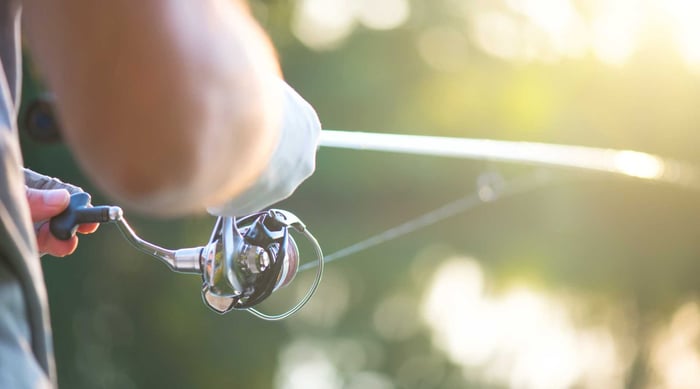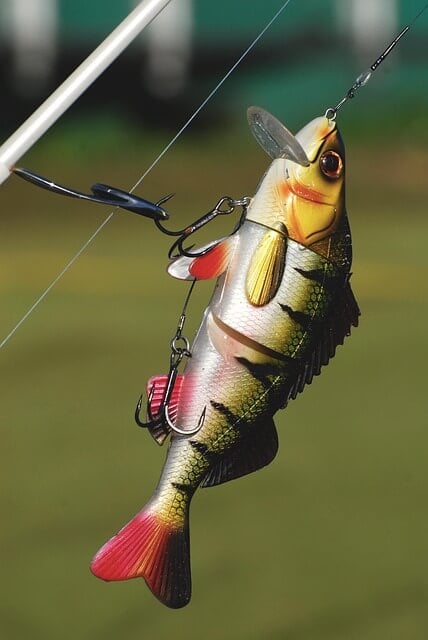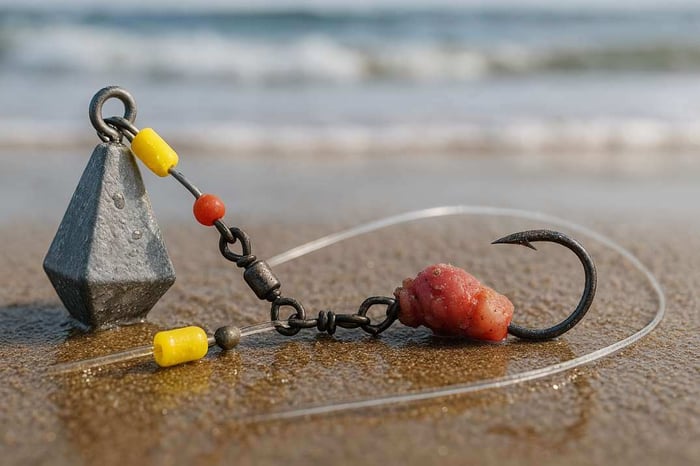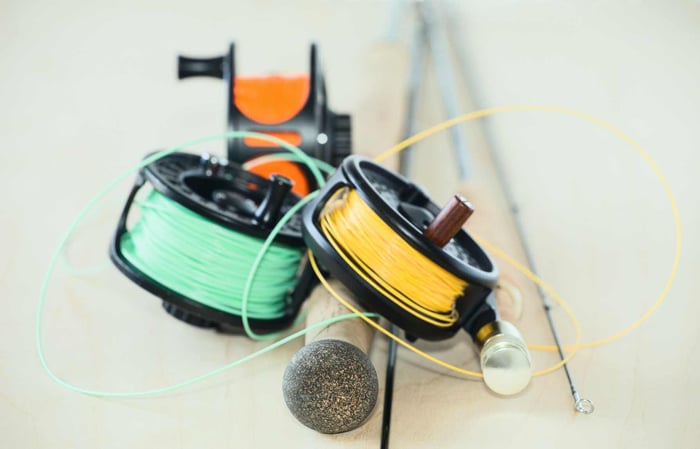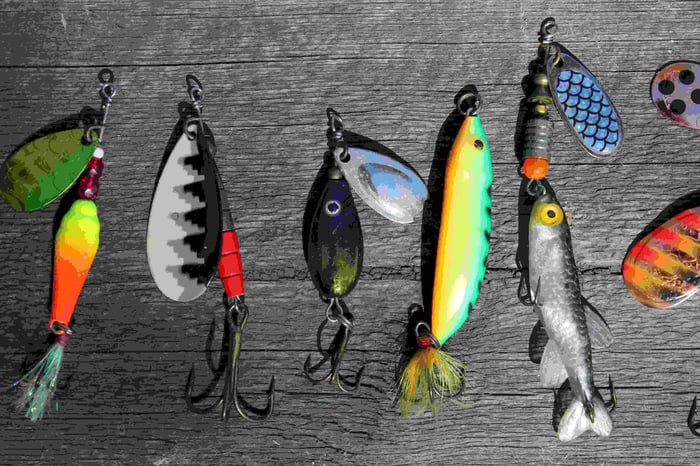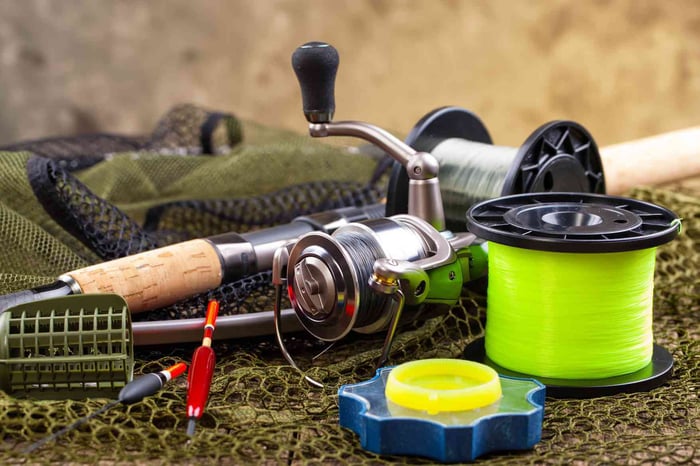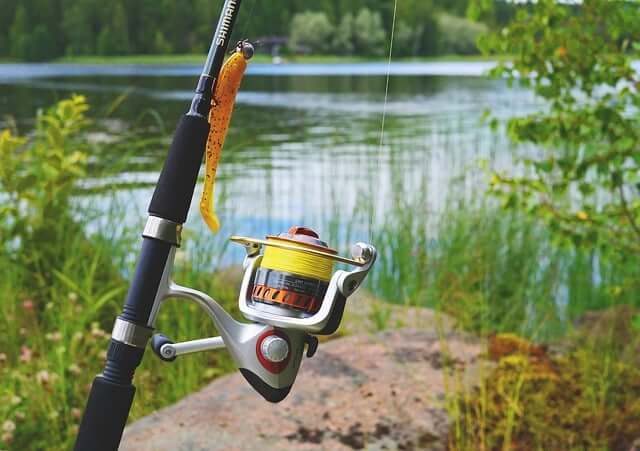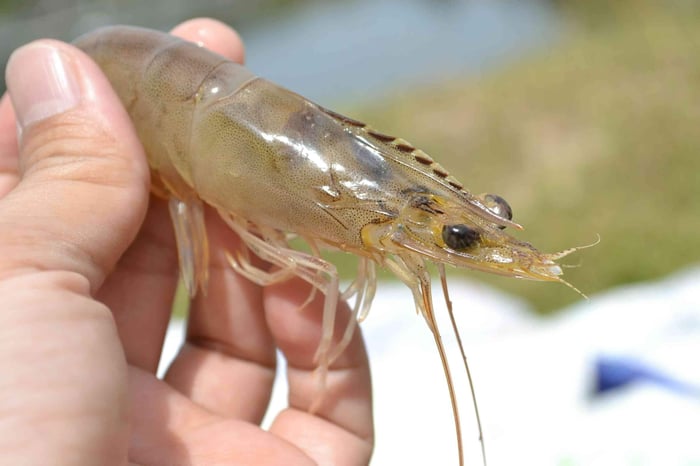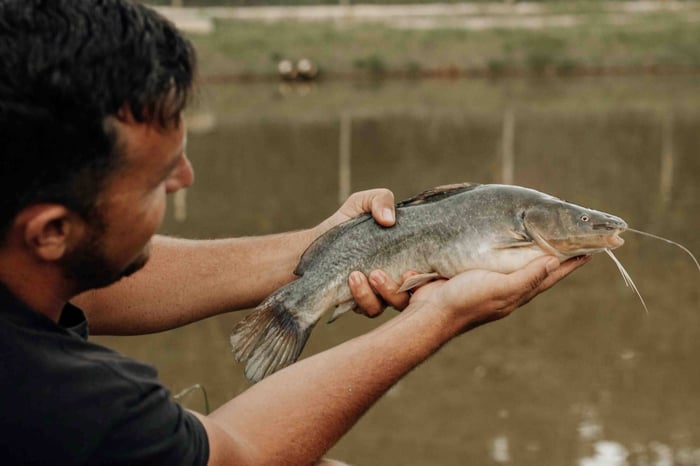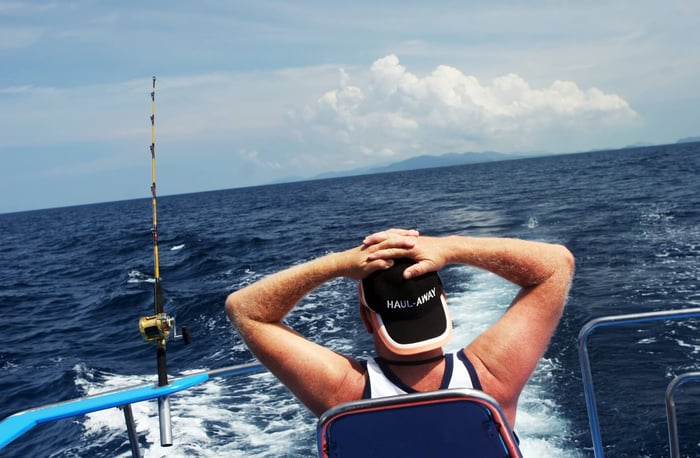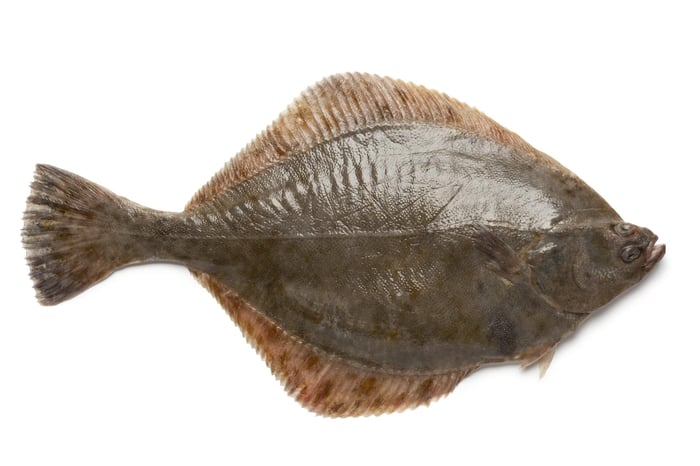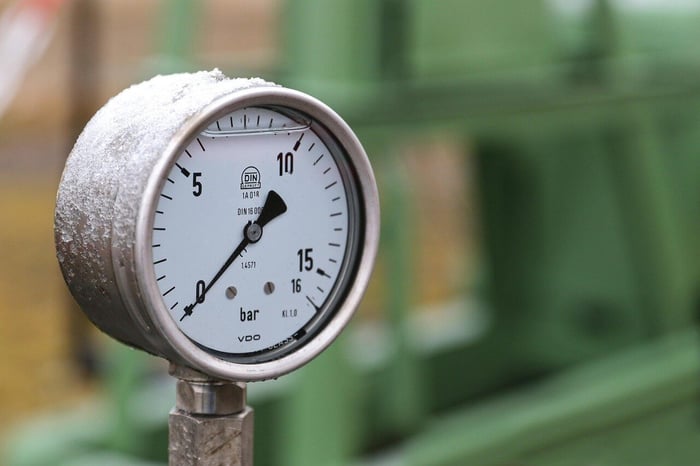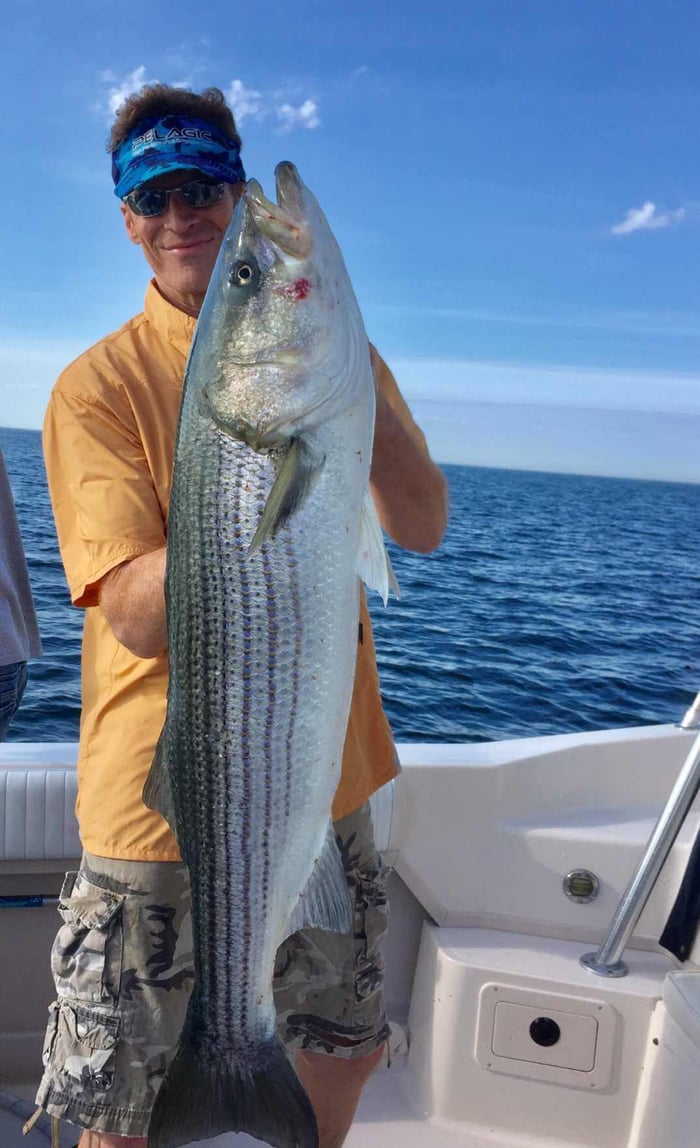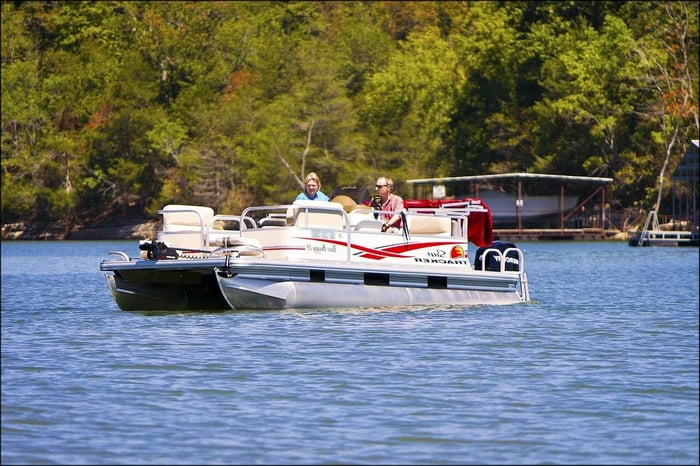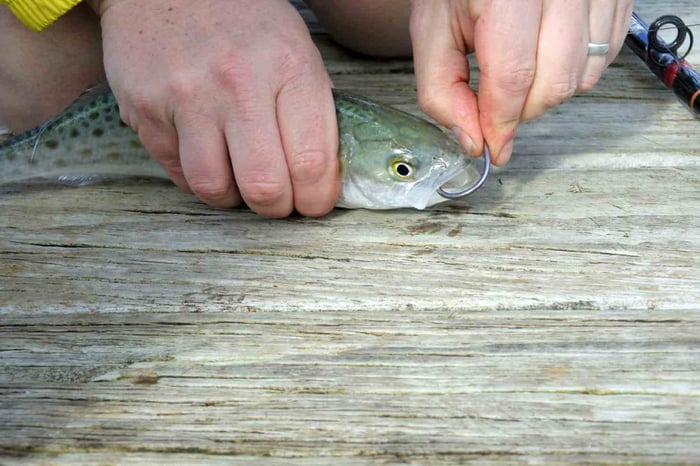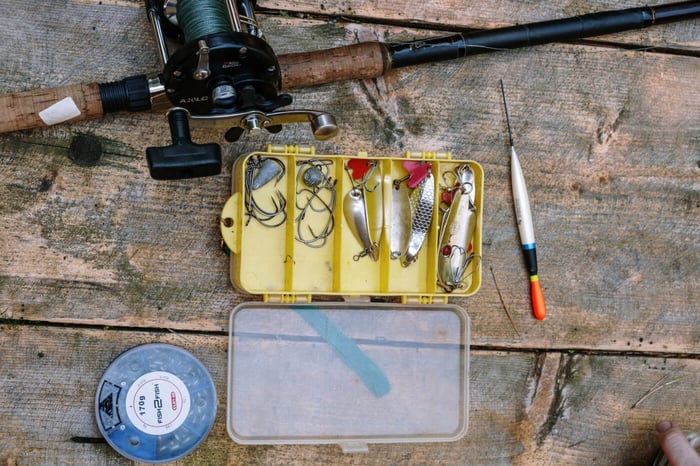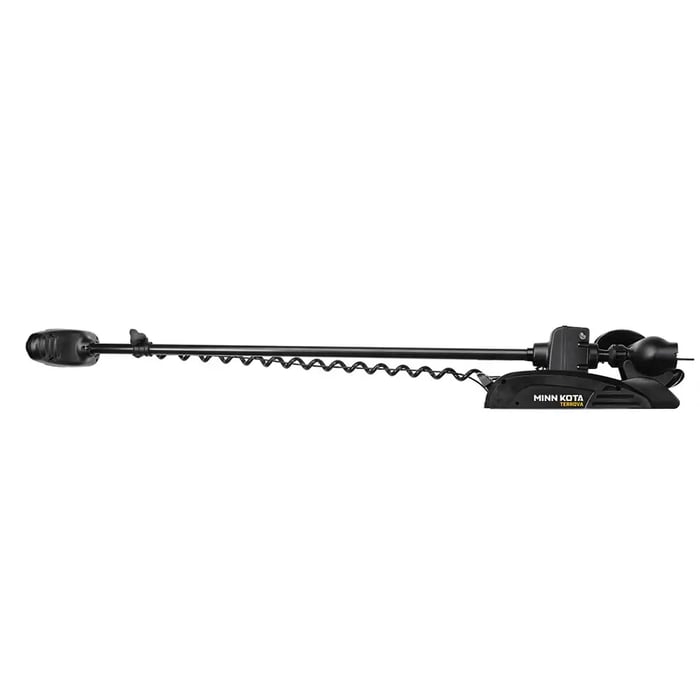Table of Contents
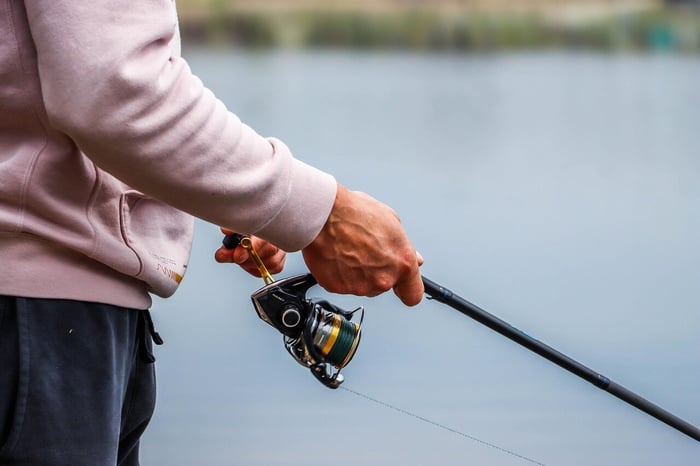 Do you remember the first time a fish had your reel screaming?
Do you remember the first time a fish had your reel screaming?
The line stripped out, the rod doubled over, and you knew that the fish was tougher than anticipated.
That is why you need to know that drag is really important.
Drag is the section of the reel that "controls" the degree of pressure a fish experiences when it runs. It is not difficult. It is merely resistance.
Too much and you break the line. Too little and you lose the fish.
I know, it gets a little complicated when you think about it.
Well, that's why the correct balance matters. It literally allows you to battle the fish without destroying equipment.
Good news. Every reel has it. Spinning reels, baitcasters, and saltwater reels all use drag to get their job done. Even small fish push it to its limits. It's honestly so amazing.
If you go after fish like trout or bass, of course, it will exert a true strain on your line. Without drag, you'd lose more fish than you catch.
In this article, we will discuss what drag is and how to use it. We will discuss the various systems. We will discuss setting it for the fish you are pursuing.
There will be some advice from the water that is based on real experience (YES, from other anglers). By the end of it, drag will all make sense, and you will understand how to use it as part of your little escapade in the ocean. Like a pro.
The Basics
So, what is drag on a fishing reel? There are "plates" within the reel that generate friction. They are referred to as drag washers.
When a fish is pulling, the spool rotates and the line travels.
Let me help you picture it. You know how a fish takes line while the rod flexes? Well, without drag, the weakest link is the line.
It breaks at the breaking strength. With drag, the reel provides just enough.
The line strips out, but does not break. This is how reel drag works, basically and simply.
Spinning reels generally have front drag or rear drag.
Front drag has the adjustment knob on the spool side. Front drag is smoother and can absorb more force.
Rear drag has it at the reel's rear. Rear drag is convenient to access and adjust in the course of a battle. Honestly, they both do the same function, but the sensation is just really different.
Another important note, though. Drag is not only for large fish. Small fish can suddenly load a rod tip. A bluegill or crappie in shallow water can still peel line when hooked on low-pound test.
You should really learn how to properly adjust your drag. It will allow you to have MORE fun with the adventure and catch more fish. Less stress, too!
Why Drag Settings Matter
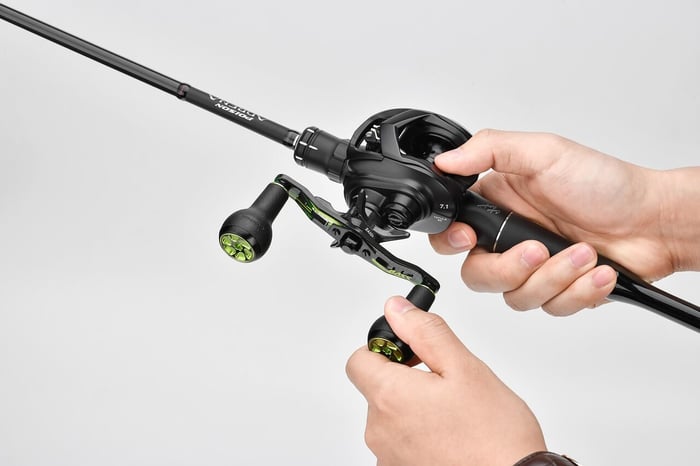
The drag on a fishing reel is not a guess. That's actually very dangerous.
Get the drag wrong and you lose fish.
Drag too tight and the line snaps. Drag too loose and the hook gets pulled.
A proper drag setting maintains control in your hands.
Drag ensures more than the line. It actually prevents the rod from breaking when the fish suddenly strikes. It maintains constant "pressure" so the hook remains set no matter what.
That is the reason why each angler learns to set the drag on the initial cast.
I mean, just imagine if you get hooked on bass tight under cover. You need sufficient drag to draw it out, but not enough drag to pop the line.
Now consider trout in a moving current.
You must fine-tune with lighter drag so the fish can run. Two distinctly different fishing methods, but both are dependent upon drag adjustment.
A drag system is half skill and half feel. Scales are used by anglers to calculate how much drag in pounds is appropriate.
Most do it by hand. You take the line and turn until the pressure is appropriate.
It does not require heavy tackle to learn. It requires practice and faith in the reel. That's why most anglers call it, you just have to "feel" it.
Types of Drag Systems
Different reels have various drag systems. Each one has its application.
• Star Drag
Star drag exists on a lot of traditional reels and baitcasters. The star wheel resides near the handle. Rotate it to tighten or loosen. It is easy and fast. Star drag is durable and long-lasting.
• Lever Drag
Lever drag is prevalent on saltwater equipment. You push a lever to change pressure. Lever drag provides a broad range and smooth adjustment.
Anglers who pursue big fish offshore prefer it since you can set the drag at a distinct point. You also, more or less, have an idea of how much force it provides.
• Front Drag
Front drag is found on the majority of spinning reels. The knob is located on the spool.
This design enables a greater surface area for drag washers. That translates into smoother pull and greater force when you want it.
• Rear Drag
Rear drag places the knob at the back of the reel. It is convenient to access while reeling in a fish. Some fishermen like using it for rapid adjustment of drag.
The drawback is that it does not provide as much pressure as front drag. So, that's something to consider, too.
AFTER EVERYTHING, honestly, if you want my thoughts, there really isn't a best option for everyone.
Some prefer the strength of the star drag on heavy tackle.
Some prefer the precision of front drag on light tackle.
The important thing is understanding how both drag systems function and applying them with the correct rod, line, and fishing conditions. That's all that matters, really.
How to Set Your Drag (Step by Step)
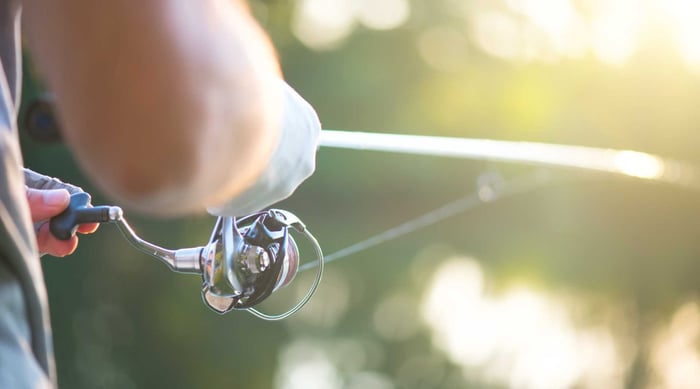
General rule of thumb: 20–30% of the line’s breaking strength.
Most anglers wonder how much drag is appropriate.
A handy number is roughly one-third the pound test of the line.
When you're using 15-pound line, you should have roughly 5 pounds of drag.
Honestly, it isn't an absolute number, but hey, it's a good starting place.
Then, from that, you tinker with the fishing method and the fish you are after.
Method 1: Pull the line with your hand and adjust the feel.
Another means of setting the drag is by hand.
Thread the line through the guides, attach a hook, and pull straight from the tip of the rod.
The line should come off the spool under consistent pressure.
If the drag is set too tight, the line will not move, and the rod will bend too much.
But at the same time, if the drag is set too loose, the line strips out with hardly any force.
Adjust until you find a balance that feels like enough drag without pushing the line to its breaking point.
This method is quick and works fine on the boat or before the first cast.
Method 2: Use a scale or spring balance for accuracy.
Another method is to employ a small spring scale. Loop the line around the scale and pull on it.
Observe the pounds of tension it requires before the spool rotates.
Acquire the drag adjustment so the line moves at the desired load.
This provides a more precise drag setting and is useful when you are fishing bigger fish or when you are running braid that does not stretch.
As soon as you begin to fish, you will perhaps have to adjust again.
The drag you set in at the dock may not feel the same once the rod loads up in actual fishing.
Some fishermen back off a bit, then tighten up again when the fish gets tired.
That "little" drag adjustment can prevent you from losing a large one at the boat.
DO NOT lock down before you even make the cast.
A too-tight drag is the quickest means of losing fish and snapping rods.
Another frequent lapse is overlooking the drag check at the end of a trip or when changing reels. Get into the habit of stripping the line before each trip.
Additionally, a quick check is essential, just in case.
Fishes You "Drag" With
Drag settings vary with the fish that you pursue. Small fish such as trout, crappie, and panfish require light drag.
You need only a little pressure of several pounds since their runs are not really that forceful.
A loose drag allows the line to slide freely when the fish makes a run, so the hook remains fixed and does not rip loose. With spinning reels and light pound test, a gentle tug is sufficient.
Medium Drags
Medium drags are suitable for bass, walleye, and catfish. You want enough drag to initiate a good hookset but not so much that the tip locks up.
Bass fishermen will pre-set their drag before flipping jigs into thick cover.
Too much drag, and you reach the breaking point on a hookup in weed.
Too little and the bass takes the line without ever making it out.
A precise drag adjustment is the difference between landing a fish and losing a fish.
Heavy Drags
Heavy drag is reserved for musky, stripers, and saltwater species.
They require more pressure and bigger equipment. A saltwater fisherman battling tuna can attest to this.
You sense the rod cranking hard, the reel drag operates in tension, and the fish makes extended runs.
Steady drag can hold at bay the initial surge, but you must still dial in as the battle wears on.
A smooth drag system is the key when the big one is hooked.
Light Drags
Each species feels differently.
Light drag allows smaller fish to make quick runs with no harm.
Medium drag offers a balance between control and give.
Heavy drag allows you to lean into big fish confidently.
After you get a feel for each, you can set the drag and let the reel respond to the fish.
DO NOT Do These
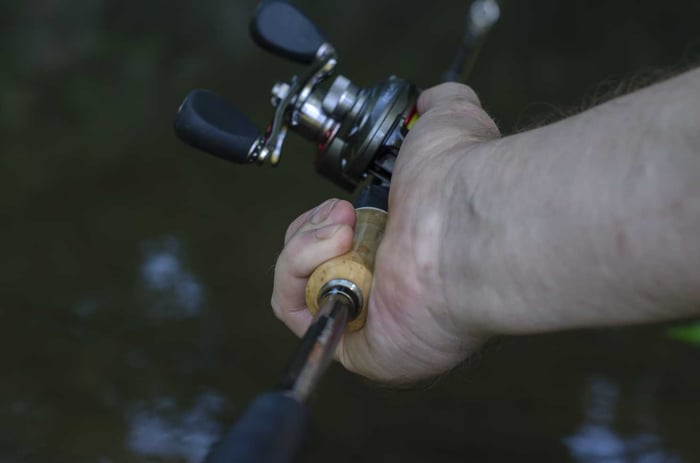
•) One of the most common mistakes is fishing with the drag locked down.
Some anglers believe that they can simply horse it in, but a hard drag finishes only in break-offs. The rod or line yields much sooner than the fish.
•) Yet another slip is not resetting after storage.
Past experience has shown that stores with drag washers compressed in close proximity are more effective.
That wear ensures the drag is not even next time out.
Back off whenever you store gear, then set drag new before the first cast.
•) Not testing drag before fishing loses catches as well.
The instant tug on the spool indicates whether or not the drag functions the way you want.
Skimping on that step is how a hook-up becomes a lost fish.
Disregarding the line condition only makes it worse.
Worn line combined with tightened drag equals heartbreak.
A thin line at the breaking point can't hold when a fish takes off.
•) Too much mid-fight adjustment is a problem.
Some crank the knob on every bend. Every turn adds tension until something breaks.
Better to rely on the drag setting you set at the beginning and fine-tune only when the fish tapers off.
Some Tips and Tricks For You!
Loosen It
One of the habits that saves gear is loosening the drag after a trip.
This relieves pressure on the drag washers and maintains the smooth operation of the drag system.
Used reels that were never backed off will frequently feel sticky.
Adjust Drag To Your Rod
The second tip is to equate drag adjustment with rod action. A soft rod tip dissipates some force, so you may run a bit tighter drag.
A stiff rod requires looser drag because it bends less.
Drag and rod team up to manage the pull.
Adjust the drag before you cast, not after the hook.
A drag adjusted at the beginning provides consistent control after the line breaks.
Delaying until fight time to tighten wastes time and jeopardizes break-offs.
Extra Drag? Your Thumb
Anglers with baitcasters or fly reels sometimes use their thumb or palm as extra drag.
It adds surface pressure to the spool for more control.
It takes feel, but it can help when the fish strips line faster than expected.
Just Listen
Listen to the reel. If you hear a line leaving, it tells you how much pressure is on the system.
When there's a constant buzz, it means the drag is working. When the rod bends silently with no play, trouble.
Most anglers have one rule of thumb.
Tight enough to set a good hookset, loose enough to allow the fish to run.
That balance maintains tension on the fish without stressing the line to the point of breaking.
When you find that balance, you will catch more fish. I bet you'll also feel even MORE confident in the reel in every battle.
Drag Maintenance and Care
A drag on a fishing reel only functions when you maintain it.
Sand, grit, and water provide friction in the wrong places. So, they create this "uneven" drag.
Wipe down the reel and inspect the spool for dirt after a trip.
•) Always back off the drag when storing the reel.
A tightened drag sitting for weeks overloads the washers. With time, they get rough, and the drag system sticks.
Reels that were never backed off get old and lock up when a fish takes line.
A pre-storage drag adjustment saves wear.
•) Inspect the drag on each reel at the beginning of the season.
Draw out the line from the spool and sense the way it travels.
If the pressure enters in jerks or slips without consistent tension, the drag must be adjusted.
On smaller fish, you can manage with it, but on larger fish, the uneven pull most often results in break-offs.
•) If drag is sticky, one solution is to pop the reel open and clean the washers.
Some anglers use new surfaces as replacements for smoother reel drag.
THE BOTTOM LINE HERE is, you do not necessarily need heavy-duty gear or a visit to the shop.
Simple care keeps your reels prepared for the battle and prevents lost fish. You just need to know how. The good news is, there are A LOT of tutorial videos online. They're all free!
How Do You Know You're Dragging It Right
You can quantify how much drag in a scale, but the test is the sense at the rod tip.
When the line travels, the pull should be consistent.
The rod flexes smoothly, the spool rotates, and you maintain pressure without reaching the breaking point. That consistent tension is how drag performs best.
Bad drag is also easy to recognize. The line twists out in abrupt jerks. The spool freezes for an instant and then slips hard.
At other times, a tight drag will not yield at all, and the rod overloads.
All of these "signs" tell you that the drag system is not working properly.
Feel is more important than numbers since fish never strain with the same pull as necessary on a scale. A bass will surge once and then quit.
A saltwater fish may burst run. If you have smooth drag, you remain in control regardless of the weight of the fish.
Fishermen frequently state they have faith in the reel by touch.
If the rod tip bends consistently and the line runs, you know the drag is correct.
That sort of control is what allows you to bring fish in, from small fish on a spinning reel to a large one offshore. The difference is big, as you can see.
Final Thoughts
Drag is perhaps the easiest piece on a fishing reel, but it actually determines the kind of "catch" you'll have every time.
It doesn't matter how much drag you can turn down.
It matters how much drag you can find to hold consistent pressure without taking your line to the breaking point.
Anglers learn it more by feel than by measure. You peel off line from the spool, the rod curves over, and you learn what works.
After a while, the sounds of moving line and curvature of the rod TELL YOU MORE than any measuring scale.
That sense of control is what gets you stuck to the fish until it's in the boat or on the shore.
Honestly, there is NO ONE drag setting for all methods of fishing. Various reels, lines, and species all require slight variations.
What is important is that you do check it, do adjust it, and do trust it.
When you set the drag the right way, you guard your gear, conserve your line, and land more fish. That is the honest answer to the question of what drag on a fishing reel is. The most basic answer, too.
Really, it is the quiet component of the reel that functions when the big one makes its break.
